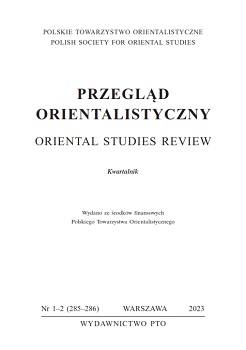Language Attitudes of Native Be Speakers Towards the Be Language – Xianguang Village Survey
Language Attitudes of Native Be Speakers Towards the Be Language – Xianguang Village Survey
Author(s): Katarzyna Wizła-LinSubject(s): Sociolinguistics, Philology
Published by: Polskie Towarzystwo Orientalistyczne
Keywords: Be; Lingao; Hainan; language;
Summary/Abstract: The Be language, also known as Ong Be or 临高话 Língāohuà, is spoken by around 600,000 people in Lingao county on Hainan Island and in the suburbs of Haikou city. It is a non-Chinese language that belongs to the Tai-Kadai group (状侗语族 Zhuàngdòngyǔzú). Be is a language that is spoken mostly in informal contexts as it is considered inappropriate to speak it at school or work. Nowadays, plenty of native Be speakers decide to communicate with their children only in 普通话 Pǔtōnghuà. This phenomenon is worth further investigation. The purpose of this study is to learn more about the language attitudes of native Be speakers towards their mother tongue. The main research method was an on-location survey in September 2019. The questionnaires were distributed and collected in Xianguang village in Lingao county. First, respondents were asked to state which language they use in a variety of situations. Next, they were asked which language they would prefer to use in the same situations. Finally, they were asked to state the extent to which they agree with statements presenting views on the Be language. As 40 respondents matched the operational definition, i.e., they were native Be speakers, 40 questionnaires were analysed. The general results are that while native speakers of Be show a positive attitude towards using their mother tongue in informal settings such as at home with family or close friends, especially when talking to elderly people, they believe that using the Be language is not appropriate in formal contexts such as at school or work. The purpose of this article is to show the results and analysis of the data collected during the on-location survey.
Journal: Przegląd Orientalistyczny
- Issue Year: 286/2023
- Issue No: 1-2
- Page Range: 107-118
- Page Count: 12
- Language: English

